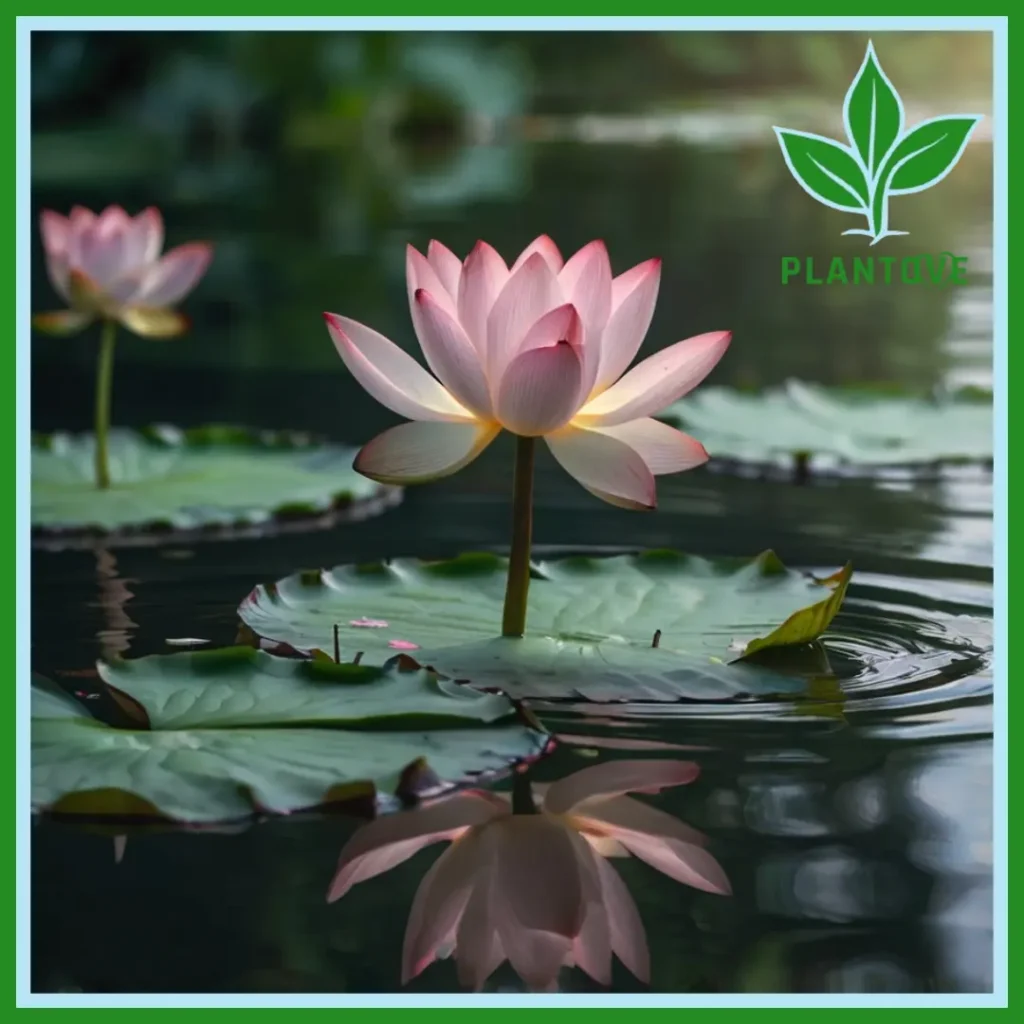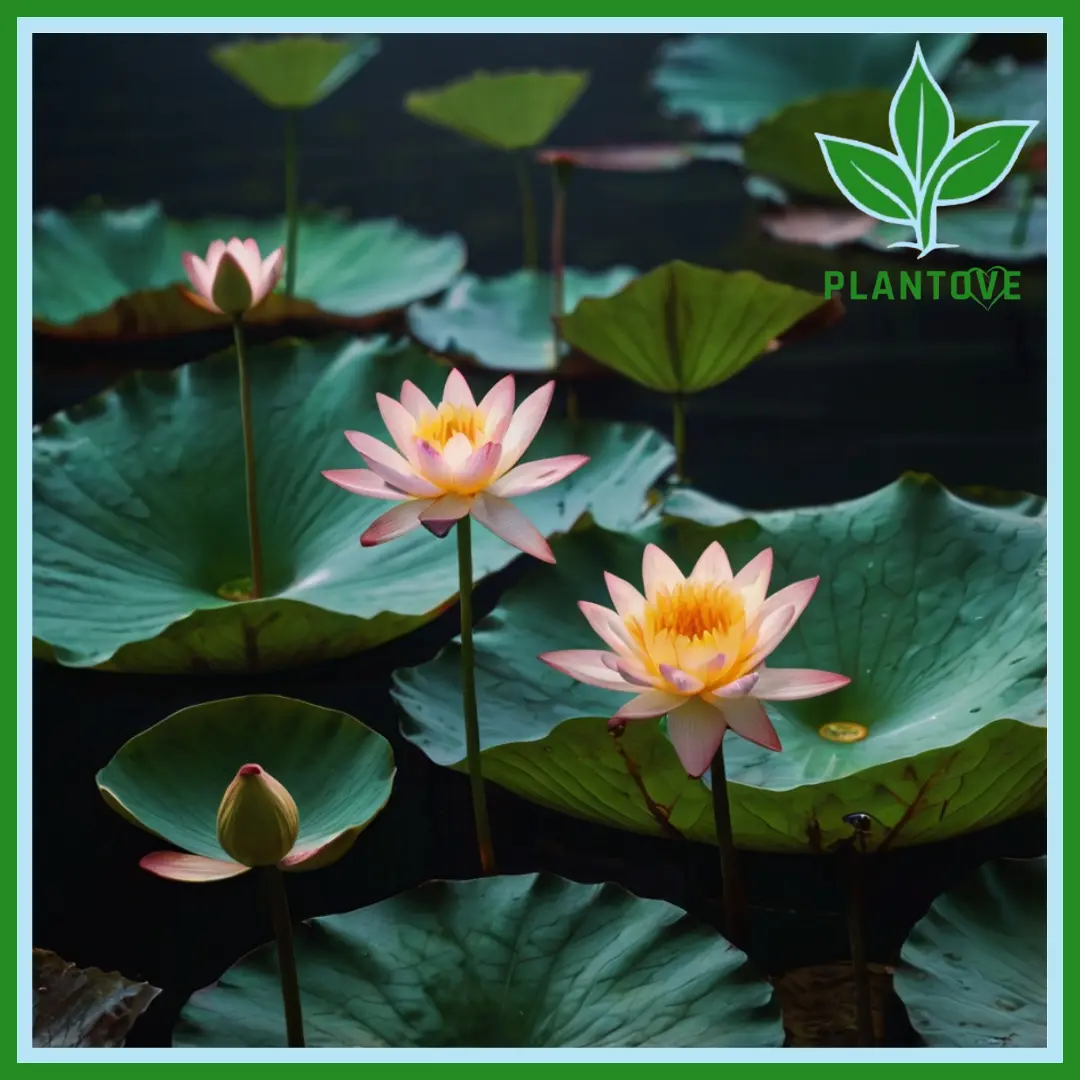The 7 Leaf Lotus Plant is a striking, rare aquatic plant known for its beauty and symbolic meaning. It’s often admired for its elegant leaves and the spiritual significance it holds in various cultures. Whether you’re looking to enhance your pond or garden or simply want to add a unique plant to your collection, the 7 Leaf Lotus Plant is a wonderful choice.
In this guide, we’ll explore everything you need to know about growing, caring for, and appreciating the 7 Leaf Lotus Plant, so you can enjoy its full potential in your space.
What Is the 7 Leaf Lotus Plant?
The 7 Leaf Lotus Plant is part of the Nymphaeaceae family, closely related to water lilies. What makes this plant so special is its beautiful lotus-like structure, with seven distinct leaves that form an intricate pattern. It’s revered not only for its beauty but also for its cultural and spiritual significance in many parts of the world, particularly in Eastern traditions where it is associated with purity, spiritual enlightenment, and rebirth.
Native to tropical regions, the 7 Leaf Lotus Plant thrives in warm, aquatic environments, making it a popular choice for ponds, water gardens, and even indoor water features.
Growing the 7 Leaf Lotus Plant
When it comes to growing the 7 Leaf Lotus Plant, it’s important to replicate its natural environment as closely as possible. This plant thrives in shallow water, with plenty of sunlight and warm temperatures.
Light Requirements
The 7 Leaf Lotus Plant loves the sun. Ideally, you should provide at least 6-8 hours of direct sunlight daily for this plant to thrive. If you’re growing it in a pond or outdoor water feature, placing it in an open area that receives full sun is essential. If you’re keeping the plant indoors, positioning it near a sunny window or using grow lights can help simulate its natural light conditions.
Temperature and Climate
Since the 7 Leaf Lotus Plant is native to tropical regions, it flourishes in warm temperatures. This plant prefers water temperatures between 75°F to 85°F (24°C to 29°C). While it can tolerate slightly cooler conditions, prolonged exposure to temperatures below 60°F (15°C) can cause the plant to go dormant or die.
If you’re growing the 7 Leaf Lotus Plant in a non-tropical area, it’s essential to bring it indoors during the colder months or use a heated water feature to maintain the appropriate temperature.
Soil and Planting Requirements
The 7 Leaf Lotus Plant grows best in nutrient-rich soil. You can use a special aquatic soil mix or simply mix garden soil with a bit of clay to create a stable planting medium. Avoid using light or sandy soil, as it can easily wash away in the water.
When planting your 7 Leaf Lotus, place the tuber horizontally in the soil, covering it lightly with the planting medium. The plant’s roots should be well-covered, but the growing tips should be exposed above the soil.
Submerge the pot in a shallow water feature, with the top of the soil around 3-6 inches below the water surface. As the plant grows, it will produce large, floating leaves and eventually bloom into stunning flowers if conditions are optimal.
Caring for the 7 Leaf Lotus Plant
Caring for the 7 Leaf Lotus Plant requires attention to a few key factors, but overall, it’s a relatively low-maintenance plant once established.
Water Depth and Quality
Water quality is crucial for the health of the 7 Leaf Lotus Plant. It’s important to ensure that the water in your pond or container is clean and free of excess nutrients, which can encourage algae growth and harm the plant. Regularly changing or aerating the water can help maintain its quality.
While the 7 Leaf Lotus Plant thrives in shallow water, as it grows, you can gradually increase the water depth to 12-18 inches. This allows the plant to grow larger and stronger, with deeper roots that anchor it more securely.
Fertilization
The 7 Leaf Lotus Plant is a heavy feeder and requires regular fertilization to produce its lush foliage and flowers. You can use aquatic plant fertilizers, which are designed to release nutrients slowly over time. Fertilize your plant once a month during the growing season (spring and summer) for best results.
However, be careful not to over-fertilize, as this can lead to excessive algae growth, which competes with the lotus for nutrients.
Pruning and Maintenance
Though the 7 Leaf Lotus Plant doesn’t require frequent pruning, it’s a good idea to remove any dead or yellowing leaves as they appear. This helps prevent the buildup of decaying organic matter, which can affect water quality. Regularly checking for pests or diseases is also important, although the plant is relatively pest-resistant.
The Spiritual Significance of the 7 Leaf Lotus Plant
Beyond its ornamental value, the 7 Leaf Lotus Plant holds deep spiritual meaning in various cultures. In Hinduism and Buddhism, the lotus symbolizes purity, enlightenment, and rebirth. Its ability to bloom beautifully in murky water is seen as a metaphor for rising above challenges and achieving spiritual growth.
In many gardens and temples, the lotus is often used to represent spiritual progress and tranquility. Incorporating the 7 Leaf Lotus Plant into your space not only adds aesthetic beauty but also imbues your environment with a sense of peace and mindfulness.
Types of Lotus Plants

Though the 7 Leaf Lotus Plant is unique, there are several other types of lotus plants that share similar growing requirements and can complement your aquatic garden. Here are some notable varieties:
- Nymphaea ‘Blue Lotus’: This type produces striking blue flowers and is well-suited for large ponds. It prefers full sun and warm water temperatures, similar to the 7 Leaf Lotus Plant.
- Nymphaea ‘White Lotus’: Known for its elegant white blooms, this lotus plant adds a classic touch to water features. It thrives in full sun and can tolerate a range of water depths.
- Nymphaea ‘Red Lotus’: This variety features vibrant red flowers and is ideal for adding a splash of color to your pond. It requires plenty of sunlight and regular fertilization to flourish.
- Nymphaea ‘Yellow Lotus’: With its cheerful yellow blooms, this lotus plant brings brightness to any aquatic setting. It performs best in full sun and well-maintained water conditions.
- Nelumbo ‘Sacred Lotus’: Unlike the Nymphaea species, the Sacred Lotus (Nelumbo) has a distinct appearance with larger, rounded leaves and large, striking flowers. It requires similar conditions but has a more robust growth pattern.
Each of these lotus plants can provide different aesthetic effects and contribute to a diverse and beautiful aquatic garden. By incorporating a variety of lotus plants, you can create a dynamic and visually appealing water feature.
Common Problems and Solutions
While the 7 Leaf Lotus Plant is generally easy to care for, there are a few common issues you might encounter. Here’s how to address them:
- Yellowing Leaves: This often indicates a nutrient deficiency or poor water quality. Ensure you’re fertilizing regularly and check the water for excess algae or contaminants. Adjust your feeding regimen and water management as needed.
- Slow Growth: Slow growth can be caused by inadequate light or cold water temperatures. Ensure your plant receives enough sunlight and maintain water temperatures within the recommended range.
- Pest Issues: Though rare, pests such as aphids or spider mites may occasionally affect lotus plants. If you notice pests, treat the plant with an appropriate insecticidal soap or neem oil.
- Root Rot: This problem typically arises from overwatering or poor drainage. Ensure the plant is not submerged too deeply and that the water is clean and well-aerated.
By keeping an eye on these potential issues and taking proactive steps, you can ensure your 7 Leaf Lotus Plant remains healthy and vibrant.
FAQs About the 7 Leaf Lotus Plant
1. How often should I fertilize my 7 Leaf Lotus Plant?
Fertilize your plant once a month during the growing season (spring and summer) using an aquatic plant fertilizer. Over-fertilizing can lead to algae growth, so follow the manufacturer’s recommendations.
2. Can I grow the 7 Leaf Lotus Plant indoors?
Yes, you can grow the 7 Leaf Lotus Plant indoors using a large container with a water reservoir. Ensure the plant receives plenty of direct sunlight or use grow lights to mimic outdoor conditions.
3. What is the ideal water depth for the 7 Leaf Lotus Plant?
Start with a water depth of 3-6 inches and increase it to 12-18 inches as the plant grows. This depth supports healthy root development and allows the plant to thrive.
4. How can I protect my 7 Leaf Lotus Plant during the winter?
In colder climates, you can bring the plant indoors or use a heated water feature to maintain the required temperature. If necessary, cut back any dead foliage and ensure the plant is kept in a warm, well-lit area.
5. What should I do if my plant’s leaves start to turn brown?
Brown leaves can indicate poor water quality or nutrient imbalance. Check for excess algae, adjust your fertilization, and ensure the plant is receiving proper care. Trim off the affected leaves to promote new growth.
Conclusion
The 7 Leaf Lotus Plant is a spectacular addition to any aquatic garden, offering both beauty and a touch of spiritual significance. By understanding its growing requirements and addressing common care challenges, you can cultivate a thriving, stunning plant that will enhance your garden or water feature. Whether you’re a seasoned gardener or a beginner, the 7 Leaf Lotus Plant provides an opportunity to enjoy the elegance and serenity of this remarkable aquatic beauty.
With the right care, your 7 Leaf Lotus Plant will flourish, adding a unique and captivating element to your outdoor or indoor space. Embrace the tranquility and visual splendor that this plant offers and make it a centerpiece in your garden.

